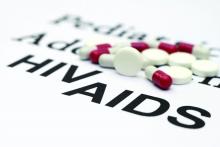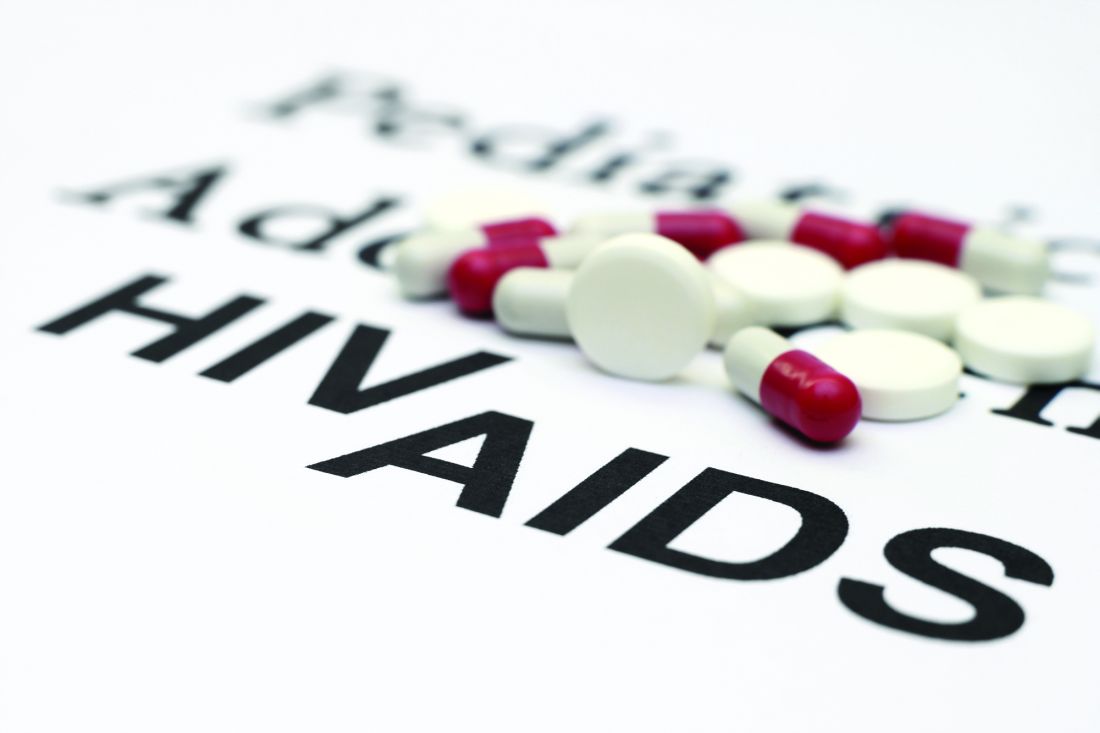User login
A great volume of HIV and AIDS research enters the medical literature every month. It’s difficult to monitor everything, so here’s a quick look at some notable news items and journal articles published over the past few weeks.
Liver stiffness is very accurate for predicting liver-related events in HIV-infected patients with chronic hepatitis C infection, according to a Spanish study.
A study in the journal AIDS found that HIV/HCV coinfection is associated with a greater homeostasis model assessment of insulin resistance, even after controlling for demographic, lifestyle, and metabolic factors. The authors said sCD163, a marker of monocyte/macrophage activation which appears independent of intestinal epithelial damage and inflammation, partly explains this association.
Liver stiffness (LS) identifies HIV/HCV-coinfected patients with compensated cirrhosis with a very low risk of portal hypertensive gastrointestinal bleeding, according to a recent study, and as a result upper gastrointestinal endoscopy may be safely spared in patients with LS less than 21 kPa.
A study in HIV Medicine found that MicroRNA-155 levels in the peripheral blood of HIV-1–infected patients are increased and associated with T-cell activation, and therefore miR-155 is a potential biomarker of the immune response following HIV-1 infection.
A study in AIDS Care found no major differences between rural and urban South Carolina residents at the various stages of engagement in HIV care, using the HIV continuum of care model.
Investigators said identification of a cytokine signature specific for the preseroconversion stage of primary HIV infection may help to understand the earliest HIV pathogenic events and identify new potential targets for immunotherapy aimed at modulating the cytokine response to HIV infection.
Intimate partner violence is linked to less HIV testing uptake among high-risk, HIV-negative women in Atlanta, according to researchers at Emory University.
In HIV-positive women with sequential pregnancies, the second pregnancy was characterized by a significant improvement in several outcomes, a recent study found, suggesting that women with HIV infection who desire multiple children may proceed safely and confidently with subsequent pregnancies.
An estimated 29% of HIV care providers had not adopted recommendations to initiate antiretroviral therapy regardless of patient CD4 count, barring contraindications or barriers to treatment, according to a study in JAIDS. The leading reasons for deferring ART included patient refusal and adherence concerns.
Baseline vitamin D deficiency decreased the effectiveness of rosuvastatin in HIV-positive adults, according to a recent study, and researchers said vitamin D supplementation may be warranted for deficient patients initiating statin therapy.
A European study found HIV/HCV–coinfected patients with a favorable virologic response to PEG-interferon + ribavirin treatment had reduced risk of all-cause and liver-related death, while there was no difference in risk of non–liver-related death when comparing responders and nonresponders.
Unlike the prevalences in the general U.S. population, there was no difference in smoking prevalence for female versus male persons living with HIV (both greater than 50%) indicating that HIV infection status was associated with a greater relative increase in smoking for women than men, according to results of a recent study.
rpizzi@frontlinemedcom.com
On Twitter @richpizzi
A great volume of HIV and AIDS research enters the medical literature every month. It’s difficult to monitor everything, so here’s a quick look at some notable news items and journal articles published over the past few weeks.
Liver stiffness is very accurate for predicting liver-related events in HIV-infected patients with chronic hepatitis C infection, according to a Spanish study.
A study in the journal AIDS found that HIV/HCV coinfection is associated with a greater homeostasis model assessment of insulin resistance, even after controlling for demographic, lifestyle, and metabolic factors. The authors said sCD163, a marker of monocyte/macrophage activation which appears independent of intestinal epithelial damage and inflammation, partly explains this association.
Liver stiffness (LS) identifies HIV/HCV-coinfected patients with compensated cirrhosis with a very low risk of portal hypertensive gastrointestinal bleeding, according to a recent study, and as a result upper gastrointestinal endoscopy may be safely spared in patients with LS less than 21 kPa.
A study in HIV Medicine found that MicroRNA-155 levels in the peripheral blood of HIV-1–infected patients are increased and associated with T-cell activation, and therefore miR-155 is a potential biomarker of the immune response following HIV-1 infection.
A study in AIDS Care found no major differences between rural and urban South Carolina residents at the various stages of engagement in HIV care, using the HIV continuum of care model.
Investigators said identification of a cytokine signature specific for the preseroconversion stage of primary HIV infection may help to understand the earliest HIV pathogenic events and identify new potential targets for immunotherapy aimed at modulating the cytokine response to HIV infection.
Intimate partner violence is linked to less HIV testing uptake among high-risk, HIV-negative women in Atlanta, according to researchers at Emory University.
In HIV-positive women with sequential pregnancies, the second pregnancy was characterized by a significant improvement in several outcomes, a recent study found, suggesting that women with HIV infection who desire multiple children may proceed safely and confidently with subsequent pregnancies.
An estimated 29% of HIV care providers had not adopted recommendations to initiate antiretroviral therapy regardless of patient CD4 count, barring contraindications or barriers to treatment, according to a study in JAIDS. The leading reasons for deferring ART included patient refusal and adherence concerns.
Baseline vitamin D deficiency decreased the effectiveness of rosuvastatin in HIV-positive adults, according to a recent study, and researchers said vitamin D supplementation may be warranted for deficient patients initiating statin therapy.
A European study found HIV/HCV–coinfected patients with a favorable virologic response to PEG-interferon + ribavirin treatment had reduced risk of all-cause and liver-related death, while there was no difference in risk of non–liver-related death when comparing responders and nonresponders.
Unlike the prevalences in the general U.S. population, there was no difference in smoking prevalence for female versus male persons living with HIV (both greater than 50%) indicating that HIV infection status was associated with a greater relative increase in smoking for women than men, according to results of a recent study.
rpizzi@frontlinemedcom.com
On Twitter @richpizzi
A great volume of HIV and AIDS research enters the medical literature every month. It’s difficult to monitor everything, so here’s a quick look at some notable news items and journal articles published over the past few weeks.
Liver stiffness is very accurate for predicting liver-related events in HIV-infected patients with chronic hepatitis C infection, according to a Spanish study.
A study in the journal AIDS found that HIV/HCV coinfection is associated with a greater homeostasis model assessment of insulin resistance, even after controlling for demographic, lifestyle, and metabolic factors. The authors said sCD163, a marker of monocyte/macrophage activation which appears independent of intestinal epithelial damage and inflammation, partly explains this association.
Liver stiffness (LS) identifies HIV/HCV-coinfected patients with compensated cirrhosis with a very low risk of portal hypertensive gastrointestinal bleeding, according to a recent study, and as a result upper gastrointestinal endoscopy may be safely spared in patients with LS less than 21 kPa.
A study in HIV Medicine found that MicroRNA-155 levels in the peripheral blood of HIV-1–infected patients are increased and associated with T-cell activation, and therefore miR-155 is a potential biomarker of the immune response following HIV-1 infection.
A study in AIDS Care found no major differences between rural and urban South Carolina residents at the various stages of engagement in HIV care, using the HIV continuum of care model.
Investigators said identification of a cytokine signature specific for the preseroconversion stage of primary HIV infection may help to understand the earliest HIV pathogenic events and identify new potential targets for immunotherapy aimed at modulating the cytokine response to HIV infection.
Intimate partner violence is linked to less HIV testing uptake among high-risk, HIV-negative women in Atlanta, according to researchers at Emory University.
In HIV-positive women with sequential pregnancies, the second pregnancy was characterized by a significant improvement in several outcomes, a recent study found, suggesting that women with HIV infection who desire multiple children may proceed safely and confidently with subsequent pregnancies.
An estimated 29% of HIV care providers had not adopted recommendations to initiate antiretroviral therapy regardless of patient CD4 count, barring contraindications or barriers to treatment, according to a study in JAIDS. The leading reasons for deferring ART included patient refusal and adherence concerns.
Baseline vitamin D deficiency decreased the effectiveness of rosuvastatin in HIV-positive adults, according to a recent study, and researchers said vitamin D supplementation may be warranted for deficient patients initiating statin therapy.
A European study found HIV/HCV–coinfected patients with a favorable virologic response to PEG-interferon + ribavirin treatment had reduced risk of all-cause and liver-related death, while there was no difference in risk of non–liver-related death when comparing responders and nonresponders.
Unlike the prevalences in the general U.S. population, there was no difference in smoking prevalence for female versus male persons living with HIV (both greater than 50%) indicating that HIV infection status was associated with a greater relative increase in smoking for women than men, according to results of a recent study.
rpizzi@frontlinemedcom.com
On Twitter @richpizzi

